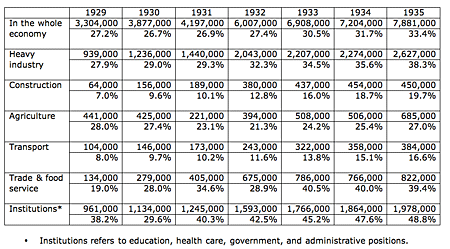Women
Southeast Asian Politics: Nonfiction, Philippine Suffrage
This is an essay written by suffragist Trinidad Fernandez Legarda, editor of The Woman’s Outlook and President of the National Federation of Women’s Clubs (NFWC). NFWC led the campaign for suffrage in the Philippines in 1921.
Southeast Asian Politics: Nonfiction, Javanese Education
Raden Ajeng Kartini is hailed in Indonesia as that country’s first feminist. She was born in April 21, 1879, in North Central Java, the daughter of a Javanese official serving the Dutch colonial government. During this time, women were secluded from the age of 14 until marriage.
Jean–Jacques Rousseau, Emile (1762)
Rousseau was the most controversial and paradoxical of the writers of the Enlightenment. Born in Switzerland, he published important works on politics, music, and in Emile, education. He also wrote one of the most widely read novels of the century, Julie or the New Heloise.
The Russian Campaign as Seen by a Female Russian Soldier
Fighting under the name Alexander Durov, Nadezhda Durova was the daughter of a Russian officer who dressed as a man to join the Russian army in 1806. Although it became known that she was a woman, she was allowed to serve until 1816 when she retired as a captain of the cavalry.
Women and Stalinism: Newspaper, Women Workers
The increased presence of women in the workforce as a result of industrialization and other aspects of modernization during the 1930s was documented in government publications.
Women and Stalinism: Newspaper, Women’s Work
The increased presence of women in the workforce as a result of industrialization and other aspects of modernization during the 1930s was documented in government publications.

Women and Stalinism: Quantitative Evidence, Women's Education
The increased presence of women in the workforce as a result of industrialization and other aspects of modernization during the 1930s was documented in government publications.

Women and Stalinism: Quantitative Evidence, Women's Employment
The increased presence of women in the workforce as a result of industrialization and other aspects of modernization during the 1930s was documented in government publications.
Women and Stalinism: Newspaper, Women’s Roles
Articles and images published in Soviet newspapers on March 8, International Communist Woman’s Day, provide the most obvious examples of how women were used as symbols in a propaganda campaign.
Women and Stalinism: Newspaper, Women's Equality
Articles and images published in Soviet newspapers on March 8, International Communist Woman’s Day, provide the most obvious examples of how women were used as symbols in a propaganda campaign.